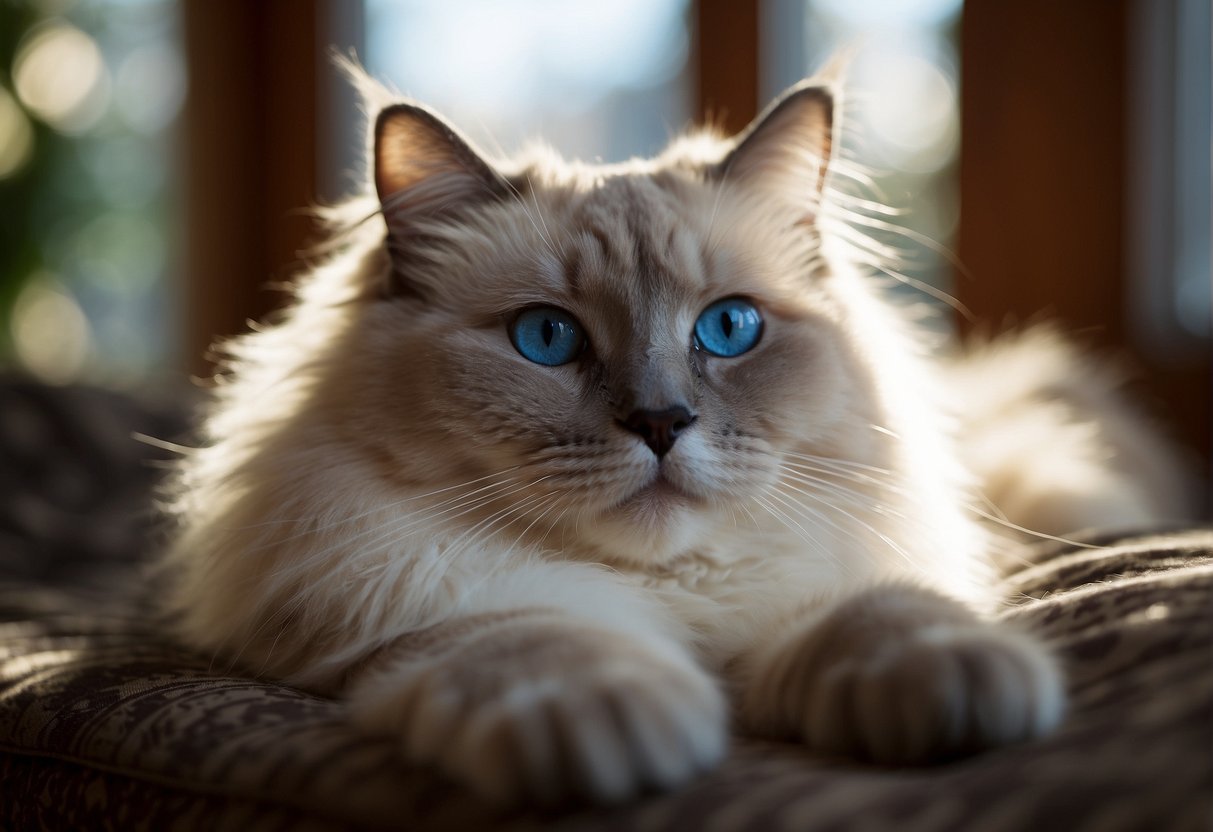Ragdoll Cat Origins
Your curiosity about where these gentle giants of the cat world come from is about to be satisfied.
Knowing the history and the careful genetic breeding that led to the creation of the Ragdoll cat will deepen your appreciation for this breed.
History
Ragdoll cats spark affection at first sight, and their story begins in sunny California during the 1960s.
Your favorite feline’s unique lineage was dreamt up by Ann Baker, a breeder who noticed a regular, non-pedigreed, white Angora-type cat named Josephine had kittens with notably calm dispositions.
After Josephine was struck by a car and recovered, the subsequent litters produced even more docile kittens which laid the foundation for the Ragdoll breed.
Intriguingly, Josephine’s car accident spurred myths surrounding a change in her genetic makeup which supposedly contributed to the Ragdoll’s temperament a myth that has since been debunked.
Genetics and Breeding
The journey of Ragdoll cats involves the selective breeding of traits to produce their famous laid-back nature.
The genetic cocktail for your adore-a-ball Ragdolls likely included Birman or Burmese, among other cat breeds, paired with the Angora characteristics of Josephine—the breed’s matriarch.
The goal was to cultivate a cat breed that wasn’t just beautiful but was also sweet-tempered and people-oriented, characteristics you have doubtlessly come to love.
These affectionate companions are now consistently known for their striking blue eyes and semi-long silky fur—a breed standard held in high esteem across the world of cat fancy.
Characteristics of Ragdoll Cats
Its long, silky fur cascades down its body, and its relaxed posture exudes an air of tranquility"/>
Ragdoll cats stand out among cat breeds with their distinct appearance and endearing personality traits.
Whether you’re considering adopting one or just curious, understanding their unique characteristics is key.
Physical Attributes
Ragdoll cats are known for their striking blue eyes and semi-long, silky fur.
They’re one of the larger cat breeds, with a sturdy build and a soft, plush coat that comes in a variety of patterns and colors.
It’s not uncommon for fully mature Ragdolls to weigh between 10 to 20 pounds, showcasing their impressive size.
Temperament and Behavior
Ragdolls are often described as affectionate and gentle.
They tend to enjoy human company, making them excellent lap cats.
This particular breed exhibits a calm demeanor and is usually not overly aggressive.
Your Ragdoll might show a playful side, engaging in activities like chasing toys without becoming too overzealous.
Health and Lifespan
Typically, Ragdoll cats are healthy, with longevity on their side.
A well-cared-for Ragdoll can live for 12 to 15 years or more.
They do have some breed-specific health considerations; monitoring their diet is important since they can be prone to obesity, especially due to their laid-back nature.
Regular veterinary check-ups are crucial to ensure your Ragdoll cat remains healthy throughout their life.
Caring for Ragdoll Cats

When it comes to the wellbeing of your Ragdoll cat, focusing on nutrition, play, and grooming will play a crucial role in their overall health and happiness.
Nutrition and Diet
Your Ragdoll cat’s diet should be rich in protein to match their needs.
It’s important to feed them high-quality, balanced food that supports their specific nutritional requirements.
Manage portion sizes to prevent overfeeding, as Ragdoll cats may be prone to obesity, which can lead to other health issues.
Exercise and Play
Despite their laid-back nature, Ragdoll cats still require regular exercise.
Interactive play is vital; it not only keeps them physically active but also mentally stimulated.
Use toys that mimic prey, like feather wands or laser pointers, to engage their natural hunting instincts and provide a good workout.
Grooming and Hygiene
Due to their long, luxurious fur, grooming is critical for Ragdolls.
Regular brushing—about twice a week—helps prevent mats and tangles.
Nail trimming should be done every few weeks to protect both your cat and your furniture.
Moreover, cleaning their ears gently can prevent infections.
For their complete grooming needs, refer to grooming your ragdoll cat.

